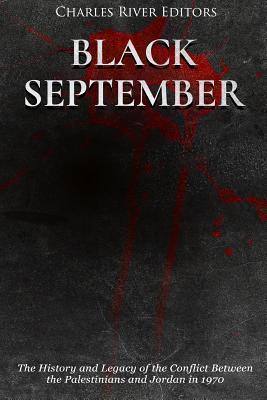Black September: The History and Legacy of the Conflict Between the Palestinians and Jordan in 1970

Black September: The History and Legacy of the Conflict Between the Palestinians and Jordan in 1970
*Includes online resources and a bibliography for further reading
"We had thousands of incidents of breaking the law, of attacking people. It was a very unruly state of affairs in the country and I continued to try. I went to Egypt, I called in the Arabs to help in any way they could - particularly as some of them were sponsoring some of these movements in one form or another - but without much success, and towards the end I felt I was losing control. In the last six months leading up to the crisis the army began to rebel. I had to spend most of my time running to those units that had left their positions and were going to the capital, or to some other part of Jordan, to sort out people who were attacking their families or attacking their soldiers on leave. I think that the gamble was probably the army would fracture along." - King Hussein of Jordan
On May 14, 1948, the British Mandate officially expired. That same day, the Jewish National Council issued the Declaration of the Establishment of the State of Israel. About 10 minutes later, President Truman officially recognized the State of Israel, and the Soviet Union also quickly recognized Israel. However, the Palestinians and the Arab League did not recognize the new state, and the very next day, armies from Egypt, Syria, Lebanon and Iraq invaded the former British Mandate to squelch Israel, while Saudi Arabia assisted the Arab armies. Jordan would also get involved in the war, fighting the Israelis around Jerusalem. Initially, the Arab armies numbered over 20,000 soldiers, but the Zionist militia groups like the Lehi, Irgun and Haganah made it possible for Israel to quickly assemble the Israel Defense Forces, still known today simply as the IDF. By the end of 1948, the Israelis had over 60,000 soldiers and the Arab armies numbered over 50,000.
In early 1949, Israel began signing armistices with Egypt, Jordan, and Syria, which left Israel in control of nearly 75% of the lands that were to be partitioned into the two states under the 1947 plan. Jordan now occupied Judea and Samaria, which later became known as the West Bank due to its position on the western bank of the Jordan River. Jordan also occupied three quarters of Jerusalem, with the Israelis controlling only about a quarter in the western part of the city. To the west, Egypt occupied the Gaza Strip. The new armistice lines became known as the "Green Line," and the conflict has continued to involve those line
79.36Lei
79.36Lei
Indisponibil
Descrierea produsului
*Includes online resources and a bibliography for further reading
"We had thousands of incidents of breaking the law, of attacking people. It was a very unruly state of affairs in the country and I continued to try. I went to Egypt, I called in the Arabs to help in any way they could - particularly as some of them were sponsoring some of these movements in one form or another - but without much success, and towards the end I felt I was losing control. In the last six months leading up to the crisis the army began to rebel. I had to spend most of my time running to those units that had left their positions and were going to the capital, or to some other part of Jordan, to sort out people who were attacking their families or attacking their soldiers on leave. I think that the gamble was probably the army would fracture along." - King Hussein of Jordan
On May 14, 1948, the British Mandate officially expired. That same day, the Jewish National Council issued the Declaration of the Establishment of the State of Israel. About 10 minutes later, President Truman officially recognized the State of Israel, and the Soviet Union also quickly recognized Israel. However, the Palestinians and the Arab League did not recognize the new state, and the very next day, armies from Egypt, Syria, Lebanon and Iraq invaded the former British Mandate to squelch Israel, while Saudi Arabia assisted the Arab armies. Jordan would also get involved in the war, fighting the Israelis around Jerusalem. Initially, the Arab armies numbered over 20,000 soldiers, but the Zionist militia groups like the Lehi, Irgun and Haganah made it possible for Israel to quickly assemble the Israel Defense Forces, still known today simply as the IDF. By the end of 1948, the Israelis had over 60,000 soldiers and the Arab armies numbered over 50,000.
In early 1949, Israel began signing armistices with Egypt, Jordan, and Syria, which left Israel in control of nearly 75% of the lands that were to be partitioned into the two states under the 1947 plan. Jordan now occupied Judea and Samaria, which later became known as the West Bank due to its position on the western bank of the Jordan River. Jordan also occupied three quarters of Jerusalem, with the Israelis controlling only about a quarter in the western part of the city. To the west, Egypt occupied the Gaza Strip. The new armistice lines became known as the "Green Line," and the conflict has continued to involve those line
Detaliile produsului










